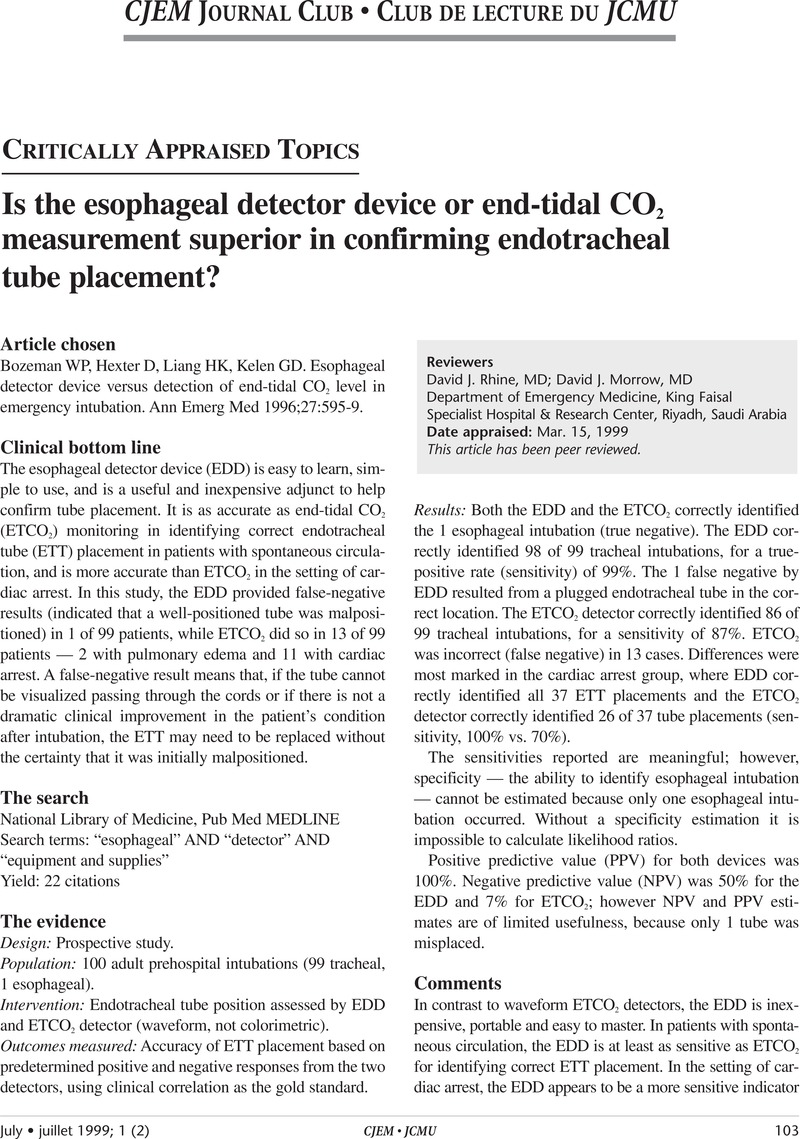Crossref Citations
This article has been cited by the following publications. This list is generated based on data provided by Crossref.
Lexchin, Joel
1999.
Esophageal detector devices and children.
CJEM,
Vol. 1,
Issue. 03,
p.
162.
Ananthanarayan, C.
2000.
Esophageal detector devices.
CJEM,
Vol. 2,
Issue. 01,
p.
9.





